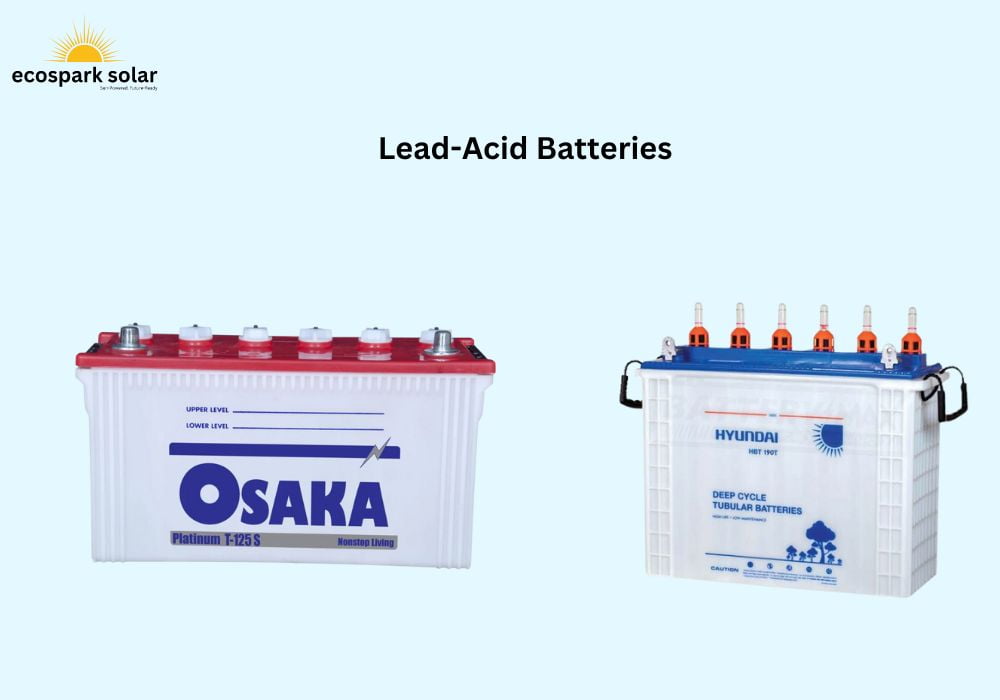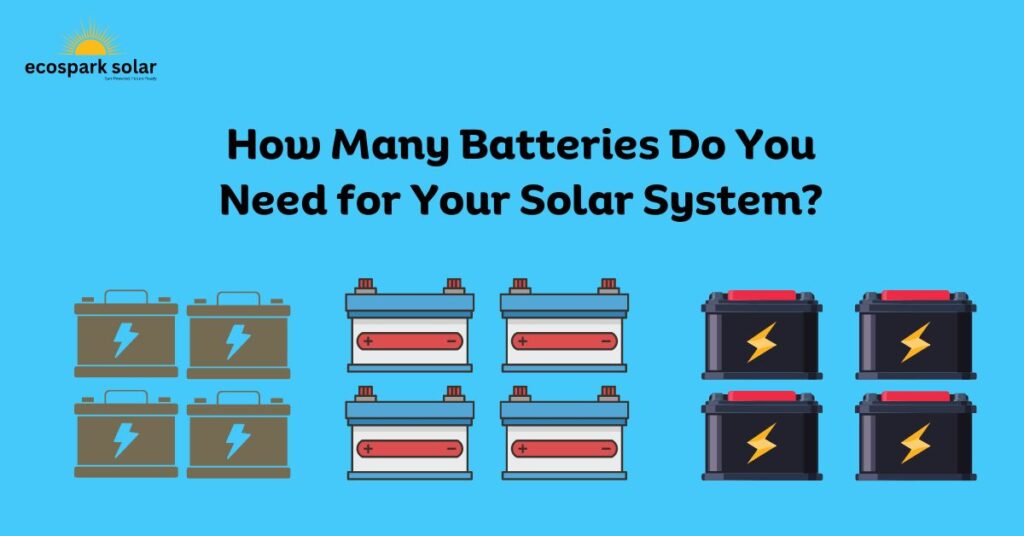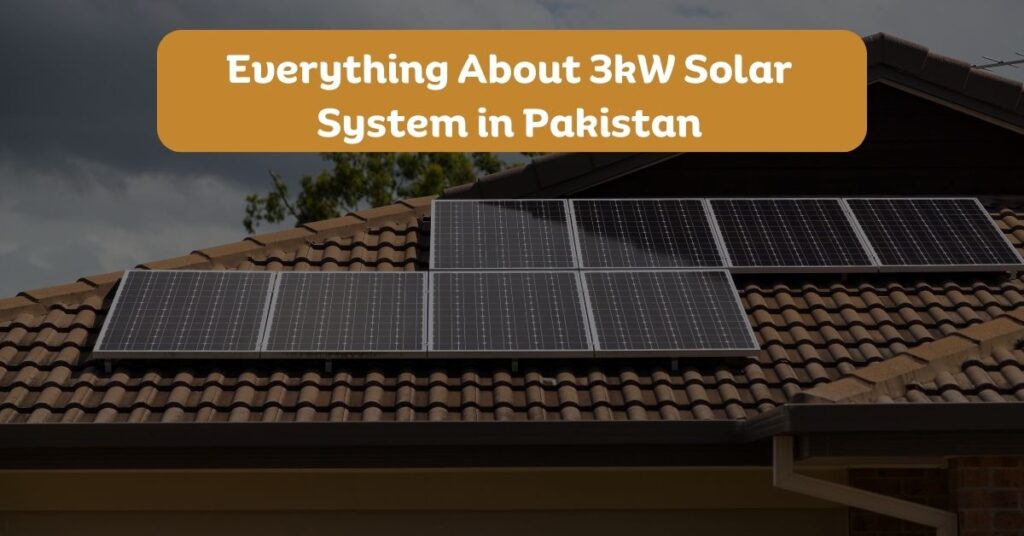When installing a hybrid or off-grid solar system in Pakistan, one of the key considerations is to size your battery bank. “How many batteries do I need for my solar system? How to calculate the battery size for my solar system?” and so on. These are some of the questions that you may ask your solar installer. And that’s what we will explain to you in as simple terms as possible.
Besides explaining how many batteries you need for your solar system, we will also have a look at the battery requirements of some of the popular systems in Pakistan. We will answer the following questions, both for off-grid and hybrid solar systems.
- How Many Batteries for a 3kW Solar System?
- How Many Batteries for a 5kW Solar System?
- How Many Batteries for a 6kW Solar System?
- How Many Batteries for a 7kW Solar System?
- How Many Batteries for a 10kW Solar System?
- How Many Batteries for a 15kW Solar System?
- How Many Batteries for a 20kW Solar System?
Let’s do it. Together.
First, let me explain a few terminologies you need to know, as you will come across them in the following sections.
- Depth of discharge (DoD): This is the percentage of the battery’s capacity that you can use before the battery is recharged. A higher DoD means that you can discharge the battery to a higher extent. For example, lead-acid batteries have a DoD of around 50%, so you cannot discharge them more than that. The DoD of lithium batteries can be as high as 90%.
- Battery efficiency: This is the percentage of the energy that is stored in the battery and that is actually used to power your home or business. If a battery has 65% efficiency, it means that the other 35% is wasted by the battery itself or is lost.
- Days of autonomy: This is the number of days that a battery can power your home or business without being recharged. It depends on the DoD, the battery efficiency, and the amount of energy that your home or business uses.
We have discussed all these terms in our guide to selecting a solar battery. You can read that if you are still confused.
Now, let’s calculate the number of batteries required for your solar system.
How to Calculate the Battery Size for Your Solar System?
Assessing the number of batteries needed for your solar system is an important step in sizing your solar system. At its core, the size of the battery bank for your solar system will depend on your average daily power usage, the type of battery you plan to use (lead acid or lithium), and factors like depth of discharge and system inefficiency. In this section, I will walk you through the steps required to calculate the size of your solar battery bank.
Step 1: Determine Your Average Daily Power Usage
To start, you need to determine your average daily power consumption. You could take this from your electricity bill. Add up all the units you have used in the past year and divide that by 12 to get the monthly average consumption. Divide that further by 30 to get the average daily consumption.
For the sake of example, let’s assume your average daily power usage is 300 units a month or 10 kilowatt-hours (kWh) or units per day, as we call it in Pakistan.
Step 2: Choose the Battery Type
Decide whether you want to use lead-acid batteries or lithium batteries. Each type has its own set of characteristics, including depth of discharge (DOD) and inefficiency factors, which will affect the size of the battery bank required.
If you are not sure what’s the difference between the two, read our article that will help you choose between lithium-ion and lead-acid solar batteries.
For Lead Acid Batteries
- Depth of Discharge (DOD): Typically, lead acid batteries are discharged to a maximum of 50% of their capacity to prolong their lifespan.
- Inefficiency Factor: An inefficiency factor of 1.2 is used to account for losses in the charging and discharging process.
For Lithium Batteries
- Depth of Discharge (DOD): You can discharge lithium batteries up to 80% of their capacity without significantly impacting their longevity.
- Inefficiency Factor: An inefficiency factor of 1.05 is used for lithium batteries.
You May Want to Read: Top 7 Solar Battery Brands in Pakistan
Step 3: Calculate Battery Size
Now, you can use the appropriate formula to calculate the battery size:
Battery Size (in kWh) = Average Daily Power Usage x DoD x (Inefficiency Factor)
For Lead Acid Batteries

Battery Size (in kWh) = Average Daily Power Usage x 2 (for 50% DOD) x 1.2 (Inefficiency Factor)
In our example, our daily consumption is 10kWh per day, so:
Battery Size = 10 kWh x 2 x 1.2 = 24 kWh
That means you would need a 24 kWh lead acid battery bank to store the energy generated by your solar system and meet your daily power consumption.
You can also convert this into ampere-hours by dividing the kWh by the battery voltage.
For a 12V battery, this will become 24 kWh / 12V = 2000 Ah
For Lithium Batteries

Battery Size (in kWh) = Average Daily Power Usage x 1.2 (for 80% DOD) x 1.05 (Inefficiency Factor)
For our example:
Battery Size = 10 kWh x 1.2 x 1.05 = 12.6 kWh
In this case, you would require a 12.6 kWh lithium battery bank.
In ampere-hours, it will be 1050 Ah (for 12V).
This means that you will need 10 lead-acid batteries or 2 lithium-ion batteries. Also, this is an off-grid setup where you rely completely on energy storage for your needs—this system can cover your needs for up to 3 days. For hybrid setups, the battery bank will be half the size of this system. It can be even smaller, depending on your needs and what essential appliances you want to power with it.
Disclaimer: The formula above doesn’t take into effect many other things. The actual size of your battery bank will differ based on your peak daily usage, instantaneous power requirement, the size of your solar system, how many appliances you want the system to power, and for how many days. Also, most hybrid inverters have their own requirements. For instance, 3kW inverters required 24V batteries, so batteries would be enough. For systems beyond 5kW, you will need 4 batteries for your inverter to function properly, as they are 48V. If you still need more power from batteries, you can connect your additional batteries in parallel (your installer would guide you more on that).
A solar system for everyone.
We’re customer-centric; we will find you a solution within your budget. Whatever your project size, you can always save with Ecospark Solar.
How Many Batteries for a 3kW Solar System?
A 3kW solar system, if it is a hybrid system, then only 2 batteries, each of 100-200Ah, can work to power your essential appliances during the load shedding. When there is no load shedding (power outage), your needs are met by the grid, so no large battery bank is required. As far as a 3kW off-grid system is concerned, if your 3kW solar system produces 12 units per day, the number of batteries will be around 10 lead-acid or 2-3 lithium batteries.
Off-grid systems are not meant for urban centers—they are meant for remote areas where there is limited grid connectivity. So, for cities like Islamabad, Peshawar, or Lahore, only 2 batteries would suffice. It’s because 3kW inverters are 24V, and only need two batteries. If you want to add more batteries, you can do that by connecting batteries in parallel and then connecting each string through a series connection to make it 24V.
How Many Batteries for a 5kW Solar System?
The number of batteries required for a 5kW solar system depends upon the type of system you are installing. If it is a hybrid system, then 4 lead-acid batteries would be fine—or one lithium battery. In case you want more appliances powered, you can increase the size of batteries.
Again, 5kW hybrid and off-grid inverter 48V batteries. That is, 4 batteries of lead-acid or one lithium-ion battery of 48V. If you want to add more, you can do that by connecting batteries in parallel, making 4 strings of it, and then connecting those in series to make it 48V.
How Many Batteries for a 6kW Solar System?
For a 6kW solar system, again, it depends upon the type of system you want to install. Hybrid systems are meant for areas with power outages, so you would need only essential appliances to be powered. Which can work with 4 batteries.
As far as off-grid 6kW solar system is concerned, if it produces 24 kWh per day, then you will need:
24 x 2 x 1.2 = 57.6 kWh battery bank. Or 24 lead-acid batteries, each of 200Ah and 12V. 12 batteries, each of 24V is the same as 24 batteries of 12V. Or 6 lithium batteries, each of 400Ah.
How Many Batteries for a 7kW Solar System?
Likewise, the number of batteries required for a 7kW solar system would also depend upon the system arrangement. Always keep in mind that we have more freedom in sizing a hybrid solar system and the number of batteries it needs. It is because it is up to us—if we want only the essential load being powered, then 4 batteries would suffice. The number of batteries would increase as we increase the load.
For an off-grid solar setup, if your 7kW solar system produces 28 units a day, then:
28 x 2 x 1.2 = 67.2 kWh would be the size of your battery bank. Or, 28 lead-acid batteries, each of 200Ah. Or 7 lithium batteries, each of 400Ah.
How Many Batteries for a 10kW Solar System?
10kW solar systems are large residential solar systems, so the number of batteries it requires would be more. But a simple tip is: if it is a hybrid solar system, then size your battery only for powering essential appliances. You can do this by calculating the output power of your loads. For instance, if it is only lights, fans, LED, etc., then 4 batteries would suffice.
But if it is an off-grid system, then if your 10kW solar setup produces 40 units a day, the battery size would be:
40 x 2 x 1.2 = 72kWh. Or, 6000Ah. Conversely, 30 lead acid batteries, each 200Ah and 12V can also work. Or 10 lithium 12V batteries.
Since it will take up too much space, we recommend choosing lithium batteries for large systems, as they occupy much less space than their lead-acid counterparts.
How Many Batteries for a 15kW Solar System?
15kW solar systems are one of the largest residential solar systems. Usually, they are not paired with batteries in a complete off-grid setup. As far as the hybrid setup is concerned, what we discussed above applies to 15kW solar systems, too. You only need batteries for essential loads, which can be done in 4 batteries. You may increase the size of the battery bank if you want to increase the number of essential appliances or add air conditioners to it.
The same is the case with a 20kW solar system or other large systems. Note that, for solar systems of larger sizes, we do not use lead-acid batteries. It is because they take up too much space. There are special types of batteries designed for larger applications, which are efficient and compact but expensive.
How Many Batteries Do I Need for My Solar System? A Recap
The number of batteries you need for your solar system always depends upon the type of system you want to install and your energy needs and goals. You can pair hybrid solar systems with a small battery bank, the size of which depends upon how much power you need during the load-shedding hours. It can be one battery, two batteries, or even 8 batteries—if you want a higher essential load to be powered.
The number of batteries also depend on your inverter and how much voltage it supports. Generally, 1 to 2kW hybrid inverter needs 1 battery, 3kW need 2 batteries and 5kW and onwards require 4 batteries.
For off-grid setups, since you will rely completely on batteries during the night, the size of your battery would depend upon the size of your solar system and your electricity needs during the night. You will also factor in the number of days your batteries can keep you powered during cloudy days.
You may find some of the stuff above technical; if you do not get, please talk to an electrician or your solar installer and they will guide you more. Or, you can contact us and we will be glad to help!



